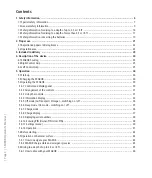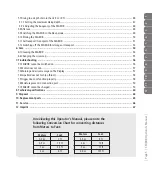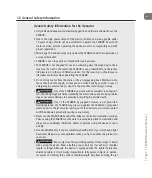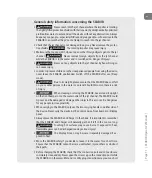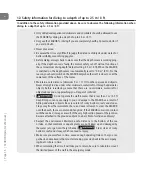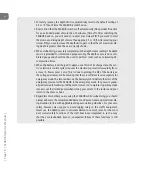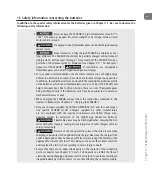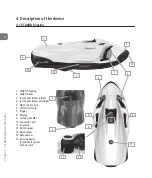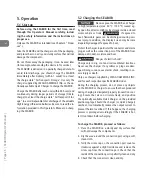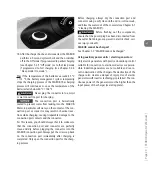
1
| P
age 16 | SEABOB Operator's Manual |
1.3 Safety information for diving to a depth of up to 2.5 m / 8 ft
In addition to the safety information provided above, be sure to observe the following information when
diving to a depth of up to 2.5 m / 8 ft:
• Only skilled and experienced swimmers and snorkelers should be allowed to use
the SEABOB for diving to a depth of up to 2.5 m / 8 ft.
• Only use the SEABOB for diving if you are completely healthy. Consult a doctor if
you are in doubt.
• Never dive alone.
• Be aware that it is very difficult to judge the distance of objects under water. For
better visibility, wear diving goggles.
• Before diving, always check to make sure that the depth sensor is working prop-
erly. If the depth sensor is faulty, the motor’s safety cut-off will not function at
the set maximum diving depth (default setting 2.5 m / 8 ft). When the SEABOB
is switched on, the depth sensor is automatically reset to "0.0 m"(0 ft). For this
reason, you should switch on the SEABOB only when the craft is close to or at the
same level of the surface of the water.
• Maintain a safe distance (minimum 5 m / 17 ft) to other persons and objects.
Never attempt to dive under other swimmers, watercraft or through underwater
objects. Before resurfacing, ensure that there are no swimmers, watercraft or
objects above you or approaching you. Danger of collision!
•
Do not operate the craft in water that is less than 1 m / 3.5 ft
deep. Doing so can cause injury to you or damage to the SEABOB as a result of
hitting underwater objects. Be very careful of rocky bottoms, reefs and stones.
Stay away from the immediate shore, and never attempt to steer the SEABOB
onto the beach, shore or onto land of any kind. If the SEABOB comes into contact
with the sea bed, it may, as a result of the very high suction power of the jet drive,
become attached to the ground and jerk to a halt. Risk of collision and injury!
• Respect the environment. Maintain a safe distance to the bottom of the sea
or lake, so that sediment or aquatic plants are not kicked up and damaged by
the water jet or get into the jet channel.
Steer clear of rocky
bottoms, reefs and stones, which can lead to injury.
• Make sure you resurface in time. Leave enough operating time so that you can
get back, and make sure that you start making your way back to the accompany-
ing boat or shore in time.
• When calculating the time it will take you to return, be sure to take into account
the limited power of the craft in the emergency mode.



